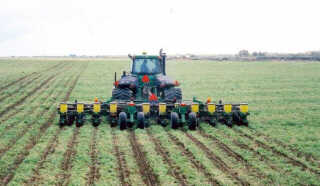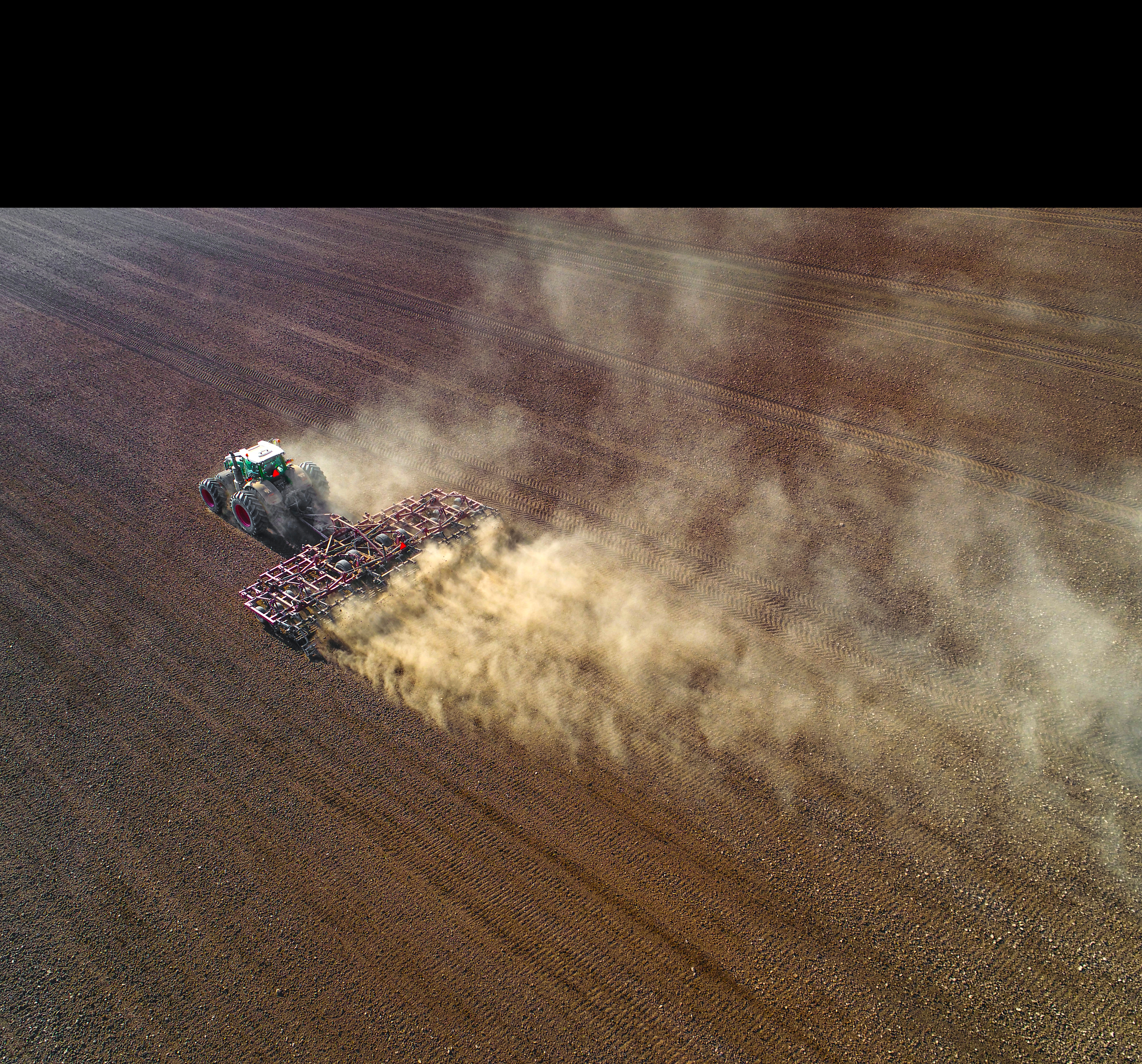
While the ridges in the ridge-till system worked quite well to provide drainage on poorly drained soils, many producers prefer a strip tillage operation rather than ridges to aid soil warming. This tillage operation removes the residue from the row area, allowing sunlight to hit the soil surface and warm the soil. As with ridge planting, planting with strip-till takes place in the residue free strips. The adoption of no-till drilling soybeans in narrow rows made ridges unpopular in many areas.
Early strip tillage attachments were typically placed directly on the planter. One, two, or often three fluted coulters tilled and loosened the soil, burying some residue and working air into the soil. This aided in soil drying and warm-up but usually pulled up wet, sticky soil which interfered with the planter units. To reduce this problem and to allow soil warming to start sooner, some producers placed the coulters on a separate toolbar and performed the strip tillage operation anytime from one-half day to several weeks ahead of planting. Spiked-wheel residue movers and fertilizer knives have also been used to remove the residue and loosen the soil in these zone tillage systems.
While many variations of strip-till have evolved, the most widely practiced strip-till systems perform the tillage in the fall and usually place nutrients in the tilled zone at the same time. A subsoiler, fertilizer knife, or multiple coulters perform the tillage allowing fertilizers to be injected through the knife or behind the coulters. Often, some type of soil mounding disks, such as those which close the slot created by a knife used for placing anhydrous, build up a slight ridge in the tilled zone to aid in soil drainage. When there are no obvious rows to follow, as in drilled soybean residue or wheat stubble, producers equip their strip-till implement with row markers to properly lay out the cleanly tilled strips for planting next spring.
Most people consider fall strip-till as a variation of no-till. The Conservation Technology Information Center's definition of no-till includes strip-till, provided less than one-third of the total row area is tilled. Some no-tillers may perform the strip-tillage operation in the spring. Some ridge-tillers use a strip-tillage operation on their ridges to inject nutrients and loosen the soil.

